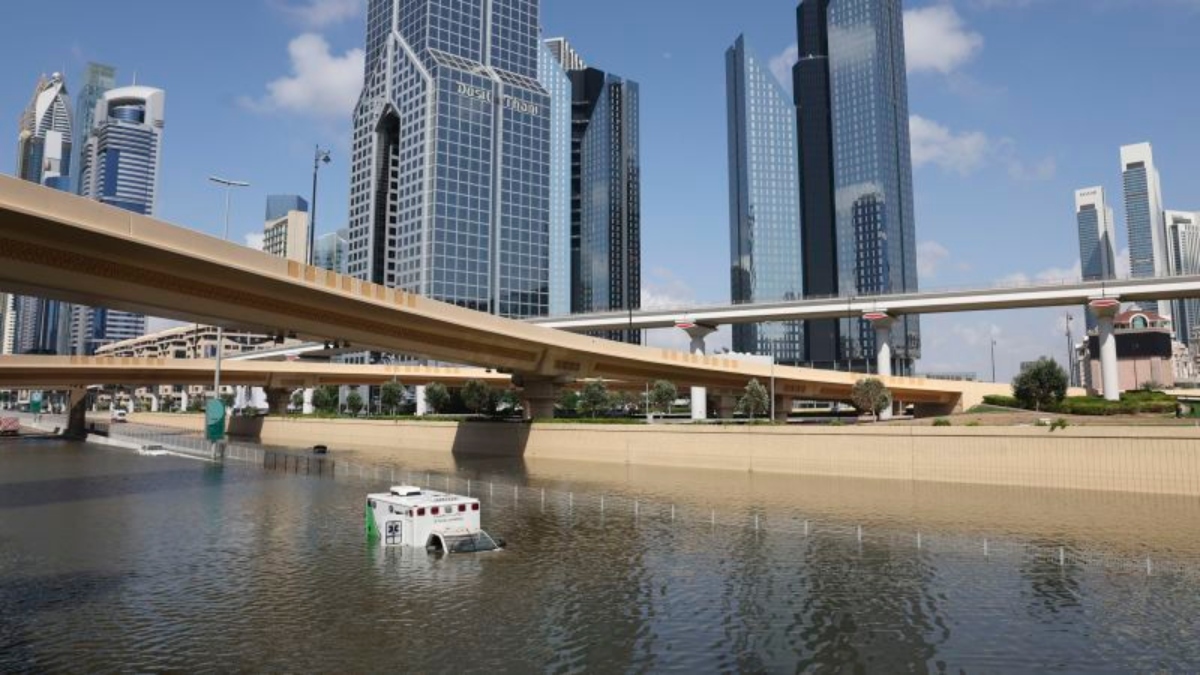What is it and how well does it work?

(CNN) — Torrential rain lashed parts of Dubai on Tuesday, turning roads into rivers and forcing the brief closure of the world’s second-busiest airport. The deluge raised a question: Was the disaster caused by the UAE’s cloud seeding program?
Officials at the country’s National Meteorological Center claimed that the rain was not due to cloud seeding. CNN has contacted the center for comment.
But even if the program had put its planes into the sky ahead of the storm, it is highly unlikely that the efforts would have produced more rainfall than would have occurred naturally.
These understandable efforts to squeeze more moisture out of clouds have been happening for decades, but there is little evidence of success.
However, this has not stopped some countries such as the United Arab Emirates, China and the United States from trying to modify the climate.
Here’s what you need to know about cloud seeding.
What is cloud seeding or bombing?
Cloud seeding or cloud bombing is a weather modification concept that attempts to extract more rain or snow from a cloud than would occur naturally.
Cloud droplets do not form spontaneously. Moisture needs something to condense, like water forming on the edge of a cold glass on a hot day. In a cloud, so-called condensation nuclei are small particles in the air to which moisture can stick.
Cloud seeding adds more of those particles to the air. The planes fly through existing clouds and inject tiny particles like silver iodide with the goal of creating more water droplets or snow.
In any cloud, when enough droplets collect, they become heavy and fall to the earth as rain or snow.
Small natural particles, such as dust and dirt, often serve as the driving force for clouds to condense and release their moisture. In theory, silver iodide could also serve the same purpose.
Does cloud seeding work?
It is very difficult to determine what effect, if any, cloud seeding has on precipitation. The experiment and attempts to measure its effectiveness are fraught with difficulties.
UCLA climate scientist Daniel Swain told CNN, “How do you know how much precipitation from that cloud is due to seeding? Or how much precipitation would have occurred without seeding?” “This is not a setting where you can really do controlled experiments.”
Researchers have tried. A 2020 study published in the Proceedings of the National Academy of Sciences indicated that cloud seeding experiments could produce 10% more rainfall than would occur naturally.
However, skepticism persists in the scientific community.
“Controlled studies need to be done to show that planting alone significantly increases rainfall,” says Swain.
What harm can happen from cloud seeding?
As the climate continues to warm due to human-caused climate change, some parts of the world are becoming hotter and drier. Cloud seeding can be thought of as a solution to bringing more water to areas that need it, but it can also make other areas drier in the process.
Water, like any other substance, can neither be created nor destroyed. It can only be transformed when it passes through the closed loop of the water cycle.
“It’s possible that by seeding clouds you are stealing water from others, because this, at least on a regional scale, could be a zero-sum game in which if water falls from a cloud in one place, that too Becomes dry. Reaches the next basin,” explains Swain.
Extreme storm system brings torrential rains
Torrential rains that caused unprecedented flooding in the United Arab Emirates, Oman and Iran appeared out of nowhere. Nor did it impact only those regions that participate in cloud seeding.
The torrential rains were caused by a large, slow-moving storm that moved across the Arabian Peninsula and the Gulf of Oman for several days. The storm was able to pick up abundant, deep tropical moisture located near the equator and release it like a hose over the region.
Regardless of whether cloud seeding occurred or not, the storm was part of an extreme configuration that had appeared in forecast models several days earlier.
These types of heavy rains will occur more frequently as the atmosphere continues to warm, causing it to absorb more moisture like a towel and expel it as heavy rain.
CNN’s Rachel Ramirez and Angela Fritz contributed to this report
(TagstoTranslate)Dubai(T)United Arab Emirates(T)Floods